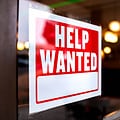Share this Post
A pipe dream—or the future of American work culture?
Three-day weekend? Read: fitting five days of work into four. Once a lofty American ambition found more likely on the banks of Italy or in a pipe dream, the four-day workweek is gaining ground. Like—for real. Companies large and small are seriously considering the shift across the nation, including here in Raleigh. And states like Massachusetts have even introduced bills directed toward incentivizing businesses to follow a four-day schedule.
While those bills may have long odds of becoming law, they do constitute the potential for a changing national work narrative. But what exactly does a four-day workweek entail, and what do the proponents and naysayers have to say about it? For a typical workweek, here’s how and why the shift could take shape.
How It Works
Depending on the model, four-day workweeks don’t necessarily mean cramming 40 hours into 32 over four short blissful workdays. The bottom line is, after all, still the bottom line. For some, like one local company looking to implement the truncated workweek, the shift provides a concentrated 40 hours in four days. While for others, like online clothier thredUP, the adopted four-day blueprint is geared toward 32-hour weeks.
While the online thrifter’s transition has focused on honing in on the most essential tasks and scrapping the extras (we see you, unnecessary emails and long meetings), it hasn’t come without its hiccups. “It’s not for everybody,” thredUP Chief People Officer Natalie Breece, who helped lead the transition, told The Wall Street Journal this fall. “It requires a constant evaluation of your own behaviors and your organization’s behaviors to move faster.” And, naturally, the work sometimes overflows to Friday.
Productivity
There’s plenty to be said about productivity, breaks, work/life balance—and it would take an entire TED Talk to break it all down. But, in short, research indicates potential setbacks and perks to both four-day models, not least of which is increased employee productivity—because increased downtime. Even employees billing 40 hours Monday through Thursday are still gaining a three-day weekend. “Ten-hour days are long and keep you from family and friends,” according to a local whose company already subscribes to the schedule. “It also takes a toll on physical health since it’s harder to get to the gym, and many medical offices are closed on Fridays. And when time changes there are many days you don’t see any daylight! But, having a three-day weekend to recharge every week makes it worth it.”
Real-Life Application
Some local companies have already subscribed to a 4.5-day structure with half-days on Fridays that others could look to as a model. “The major appeal of a 40-hour/4.5-day workweek is all about that half-day on Friday,” says a local professional who’s been working this schedule for over a decade now. “Those few quiet hours—where productivity is way up and pressure is way down—allow you to focus on the tasks that got sidelined by meetings and last-minute requests during the busy week.”
In-Person Perk?
As more companies put an end to the remote-work pandemic hangover, some employers see the updated four-day model as a potential perk to entice leary commuters. “As we continue to evaluate how we ‘return to the office,’ we have discussed the four-day workweek,” says a Raleigh executive. “Our office already utilizes half-days on Fridays, so to move to a four-day workweek is not too much of a stretch. … That said, as long as our clients work a five-day week, we will always be available five days a week.” Ultimately, if you’re on deadline, the deadline has to get done. But for now, that decision is still under consideration—and it’s only a matter of time before the future is here.
Share this Post








